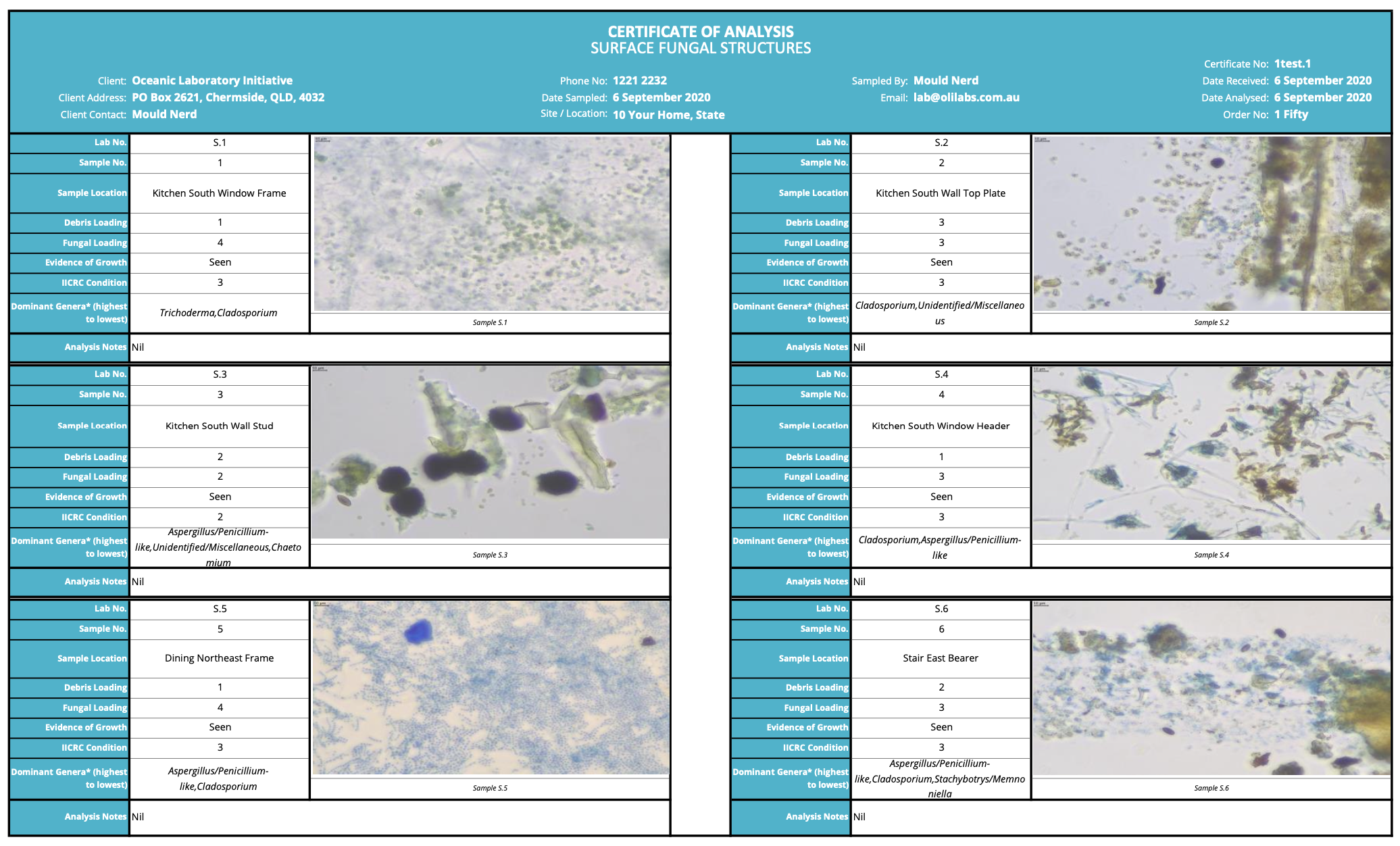At Oceanic Laboratory Initiative (OLI), we specialize in non-culturable surface mould analysis, utilizing cutting-edge methods for precise results. Our approach adheres to the industry-standard ASTM D7658 – Standard Test Method for Direct Microscopy of Fungal Structures from Tape.
We conduct surface analysis using adhesive tapes, with a preference for Zefon Bio Tapes or Mould Tape Slides. Alternatively, we accept clear/translucent tape placed on a microscope slide or mounted to a removable medium. Please note that OLI does not accept stickers, even for mould-related purposes.
We adhere to the ASTM D7658 standard, which outlines a minimum of 12 different genera of mould for analysis. This includes common water damage-related mould genus types such as Aspergillus, Cladosporium, Penicillium, Stachybotrys, Memnoniella, and Chaetomium, among others. OLI goes beyond the minimum requirements to provide a more comprehensive understanding for mould testing consultants.
To meet the semi-quantitative reporting requirements of the ASTM standard, OLI has developed a complementary process. This process helps qualitatively report on the characteristics of fungal presentations. As a result, we suggest an IICRC S520 labelling of Conditions 1, 2, and 3:
Many characteristics of fungal growth and presentations are not visible to the naked eye. Direct microscopy allows us to visually comment on these presentations and use established industry documents to guide a defensible reporting process. Our reports are concise, enabling professional judgment while being supported by representative images that add context to observations made under the microscope. This approach ensures confidence and transparency from the laboratory to the interpreting consultant.

We’re here to assist you every step of the way. Whether you have questions or need expert insights, our team is just a call or message away.

Mould Testing Analysis Servicing the Oceanic Region
For purchasing enquiries please email: lab@olilabs.com.au or fill out a contact form